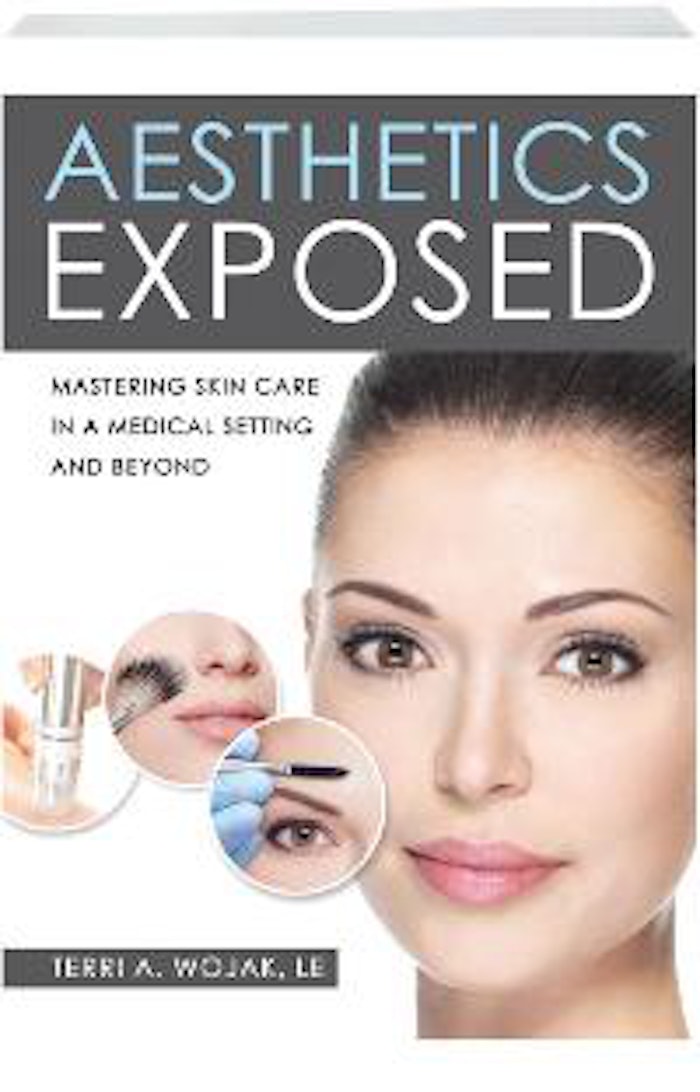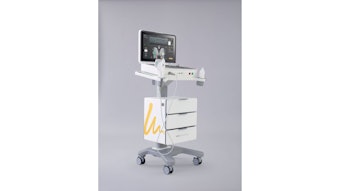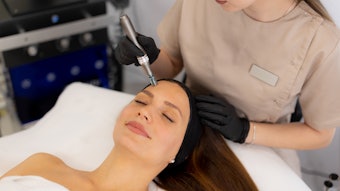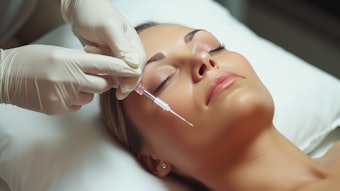
Licensed esthetician and education director of True U Esthetics, Terri A. Wojak, sat down with the editor of her new book, Aesthetics Exposed: Mastering Skin Care in a Medical Setting and Beyond, to discuss the evolution of the book and the importance of esthetic education.
Brian Budzynski: What is the purpose behind your book? If you were having to pitch it all over again, knowing now that the book is published what you did not know before you began writing it, how would you talk it up?
Terri Wojak: The purpose for Aesthetics Exposed is to essentially build the bridge between skin care and cosmetic medicine. Having knowledge of cosmetic medical treatments is no longer an option for estheticians, but a necessity. With the dramatic increase in procedures performed, estheticians must be able to treat the skin safely and effectively before and after treatments. As I was writing, it became more obvious how much a reference like this is needed. There are myriad aspects to the aesthetic industry and such a wide range of treatments available that it is very hard for professionals to keep up. My goal was to make an easy to read reference book that ties everything together from home care to esthetic treatments to cosmetic medicine.
BB: As education director for True U Esthetics and True U Laser, you have trained thousands of skin care professionals—and in fact, your entire professional career is devoted very directly to education. Could you describe your own educational history and how it steered you to your present work?
TW: I have always been passionate about education and feel that I have been very lucky with the teachers I have had throughout my career. I have never turned down an opportunity to further my education, whether it was a representative from a product line wanting to teach me about their products, to a free class or seminar, or even a pertinent book that I have come across. I honestly learned a lot on my own as well, but have always been dedicated in doing so. If there is mention of something in the industry I don’t know about or want more information on, I look it up. I have behaved this way from the very beginning when information wasn’t as easily accessible as it is now. It is much easier now for professionals to gain access to information. Another great teacher for me is my clients. I carefully listen to them and their concerns, taking note of the way treatments feel, results seen, how long it took to see results, and so forth.
BB: You have designed the structure and organization of your book to both mimic a hands-on training text and to stand alone as a comprehensive reference source. To your mind, what was crucial to crafting a book that could both entice the readers of Skin Inc. and serve your more specific purposes through True U?
TW: The book was structured as a step-by-step guide to succeed in the aesthetic industry. From focusing on the client’s concerns, from a thorough consultation, to recognizing skin conditions, and then to commonly performed treatments, to then finding a job and building a successful business, I intended for this book to be a great adjunct to undergraduate esthetic programs for estheticians. I feel it is necessary for estheticians to have an understanding of what working in a medical office entails, the procedures performed and how to compliment them with skin care. Aesthetics Exposed can be a great reference for anyone in the aesthetics industry. In recent years, I have had many inquiries from physicians on how to add skin care effectively to their medical treatments, and the book was written to help in that aspect as well.
Aesthetics Exposed was also designed to go along with the True U Education courses. True U is an advanced education center consisting of two sub-companies, True U Esthetics and True U Laser, programs which were developed to provide the knowledge needed to work successfully in a medical setting. The book follows the courses and is used as a study guide with quizzes at the end of each section.
BB: In your experience, what are the areas of skin care within a medical setting that are growing the most in popularity, and which have begun to flag in recent years? Of the latter, what, if anything, has come to the forefront to replace them?
TW: I believe that the industry is moving more toward prevention opposed to correction. At one time, skin care in a medical setting was sought by clients to obtain aggressive treatments that could not be done in a salon or spa. It now seems to be that clients are seeking skin care in a medical setting for clinical products and treatments at a more progressive level, meaning that they are wanting superficial peeling treatments and proven products to prevent the signs of aging as opposed to seeking aggressive treatments to erase damage that has already occurred.
One of the newer treatments being sought is microneedling. Microneedling stimulates a wound response in the skin to induce collagen production. At one time, microneedling rollers were used, but the lack of provider control made it difficult to see consistent results with low side effects. Microneedling devices (pens) are easily controlled by the technician, allowing the depth of the needle to be altered during the treatment to provide safe results on all areas. Radio frequency devices, used for skin tightening, have been around for quite some time but seem to be coming back into favor with new technologies that provide increased results and more comfort for the client. The only treatment that seems to be going out of favor is microdermabrasion. Microdermabrasion has been overused for quite some time. It definitely has its place for thicker, oily, young skin, but as an anti-aging treatment can be too aggressive with the suction and harsh crystals used in some devices.
As for products, plant stem cells, peptides, and growth factors are becoming top ingredients that clients are asking for. These ingredients each work in their own way to stimulate the production of skin components without irritation associated with high percentage retinoids, which used to be the go-to ingredient for anti-aging.
BB: Your book walks the reader through all aspects of what makes a successful skin care professional, from the philosophical aspects of the profession, through legal concerns, and into individual areas of care and treatment. Moreover, in our conversations throughout the editing process, you were adamant about the fact that education is an ongoing and evolving process that is meant to yield a well-rounded provider, as opposed to segmented training that bolsters one thing to the detriment of another. Could you describe what you feel, in total, makes for the best and most successful skin care professional.
TW: A successful professional will always continue their education and be open to other opinions in the industry. Like you said, it is not about learning a few things, it is the job of each professional to learn as much as possible in the industry and form their own opinions. When I became an esthetician almost 20 years ago, there were not nearly as many options available for skin rejuvenation as there are today. At least once a week a busy practice will get inundated with “the latest and greatest product or device.” It is the professional’s job to research treatment options to determine the best for their clients. What makes us each unique is our own methods and beliefs for client treatments. The more knowledge that each professional gains, the more they can make educated decisions on what to offer and/or recommend to their valued clients.
You can now purchase Aesthetics Exposed: Mastering Skin Care in a Medical Setting and Beyond at http://shop.trueuesthetics.com.










